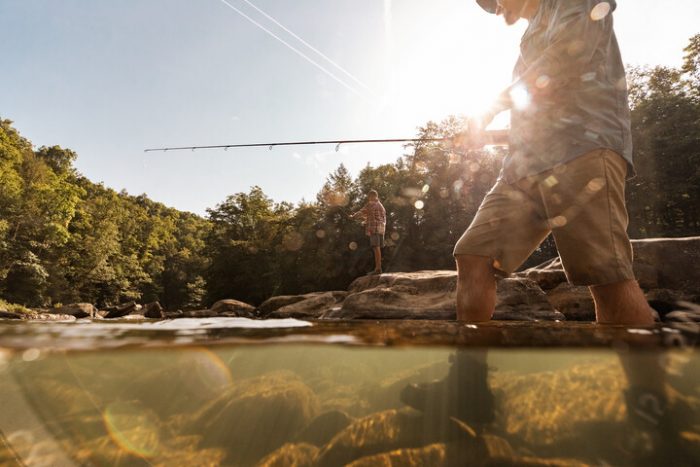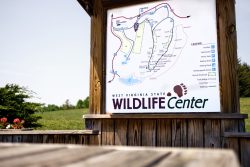Spotted Turtle Overview
Back in the 1960’s it might have been called the “itsy bitsy, teeny weeny yellow polka dot turtle.” But nowadays the name spotted turtle, though maybe not as descriptive, will suffice. Scientists call it Clemmys guttata from the Greek word klemmys (turtle or tortoise) and Latin word guttatus (spotted or speckled).
Spotted turtles are the smallest turtle found in West Virginia. Shells of adults captured in the state measure from 31/2 to 4 inches long and 23/4 to 3 inches wide. They weighed from 3½ to 6 ounces. The carapace, or top shell, is smooth and black with round yellow spots. The number of spots varies from just a few (sometimes none) to over one hundred. The plastron, or underside shell, is yellow and black and often exhibits annual growth rings which may be counted to determine age. In older individuals the plastron may be worn smooth and growth rings not as apparent. Males have tan chins and brown eyes, and the plastron is slightly concave (curved in). Females have yellow chins and orange eyes, and the plastron is flat or slightly convex (curved out). There may be a few yellow spots on the head and neck of both sexes.
In the eastern United States, the spotted turtle may be mistaken for two of its close relatives: the bog turtle (Clemmys muhlenbergi) and the wood turtle (Clemmys insculpta). The bog turtle is similar in appearance, except for the lack of spots, and is slightly smaller (3 to 3½ inches long) than the spotted turtle. Though it has not been found in West Virginia, this secretive aquatic turtle is found in Maryland and Virginia counties adjacent to the West Virginia eastern panhandle. Thus, it may occur in a few small swamps or marshes here. The wood turtle is a larger, primarily land-dwelling turtle normally 5½ to 7½ inches long. The wood turtle is found throughout the eastern panhandle, east of the Allegheny Mountains.
The spotted turtle may be found on either land or in water but most often resides in bogs, marshes, and small streams. They may bask on logs or float at the water’s surface but are very shy and dive quickly when disturbed. In West Virginia, spotted turtles seem to be most active from April through June. In winter, they burrow in the muddy bottom of a wetland or stream.
Their diet consists of both animals and plants. They eat insects, worms, snails, crayfish, and occasionally frogs, as well as grasses and algae. Predators include raccoon and skunks.
Courtship and mating occur in March and April. Eggs, normally 3 to 5 per clutch, are deposited in a small cavity dug by the female; incubation takes 10 to 12 weeks. Hatchlings are slightly over an inch long and may have a few yellow spots.
Spotted turtles are distributed from northern Florida north along the Coastal Plain to southern Maine and then west through Pennsylvania and New York to Michigan, northern Indiana, and northeastern Illinois. The known range just enters the eastern tip of West Virginia and may have once included part of the northern panhandle. However, suitable habitat is somewhat lacking in the West Virginia.



